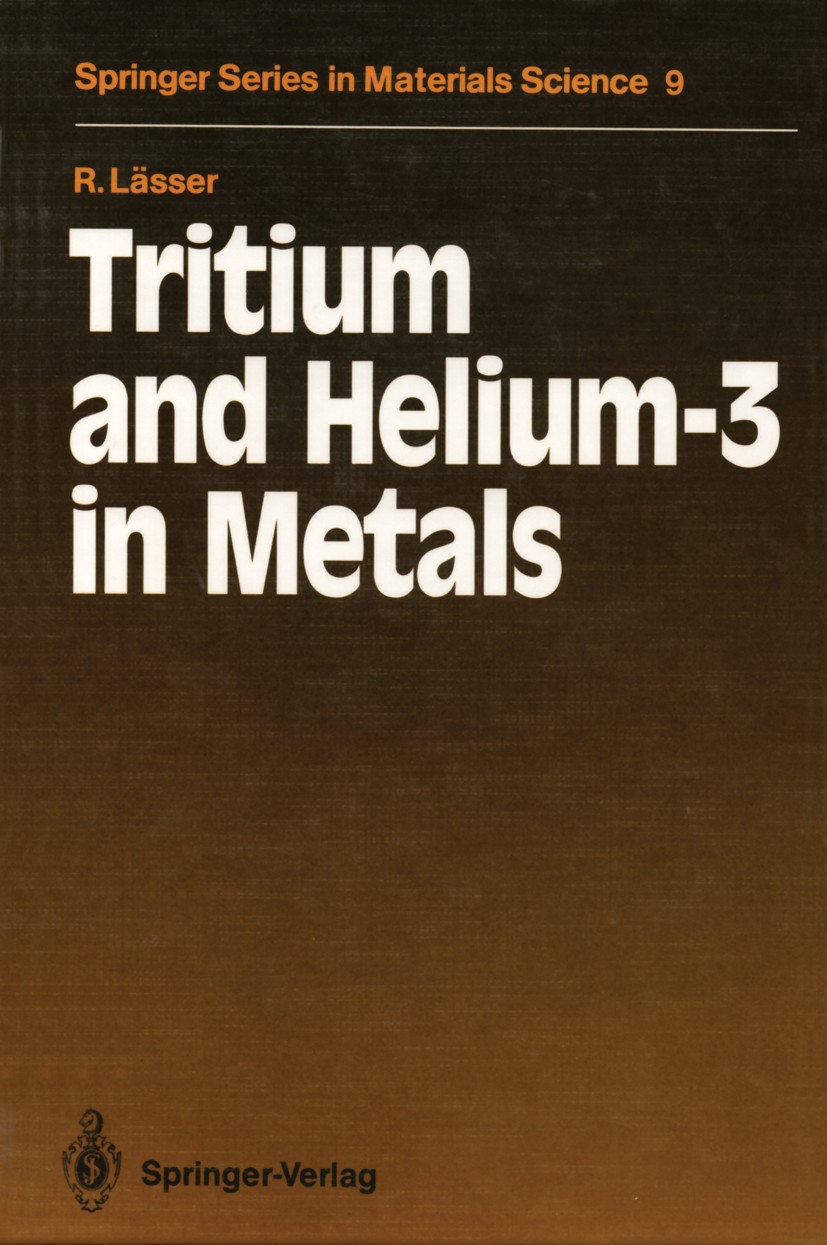| 书目名称 | Tritium and Helium-3 in Metals | | 编辑 | Rainer Lässer | | 视频video | http://file.papertrans.cn/931/930295/930295.mp4 | | 丛书名称 | Springer Series in Materials Science | | 图书封面 |  | | 描述 | Hydrogen can behave as an alkaline metal or a halogen and can react with nearly all elements of the periodic table. This explains the large number of metal hydrides. Since T. Graham‘s first observation of the absorption of hydrogen in palladium in 1866 the behaviour of hydrogen in metals has been studied very extensively. The interest was motivated by the possible application of metal-hydrogen systems in new technologies (e.g., moderator material in nuclear fission reactors, reversible storage material for thermal energy and large amounts of hydrogen) and by the fact that metal hydrides show very exciting physical properties (e.g., superconductivity, quantum diffusion, order-disorder transitions, phase diagrams, etc.). Many of these properties have been determined for the stable hydrogen isotopes Hand D in various metals. In comparison, very little is known about the behaviour of the ra dioactive isotope tritium in metals. This book is a first attempt to summarize part of the knowledge of tritium gained in the last few years. In addition to the task of presenting the properties of tritium in metals, I have tried to compare these data with those of protium and deuterium. Furthermor | | 出版日期 | Book 1989 | | 关键词 | Nuclear engineering; hydrogen; lattice parameter; materials science; solid state physics; superconductivi | | 版次 | 1 | | doi | https://doi.org/10.1007/978-3-642-73510-3 | | isbn_softcover | 978-3-642-73512-7 | | isbn_ebook | 978-3-642-73510-3Series ISSN 0933-033X Series E-ISSN 2196-2812 | | issn_series | 0933-033X | | copyright | Springer-Verlag Berlin Heidelberg 1989 |
The information of publication is updating

|
|
 |Archiver|手机版|小黑屋|
派博传思国际
( 京公网安备110108008328)
GMT+8, 2025-12-29 04:12
|Archiver|手机版|小黑屋|
派博传思国际
( 京公网安备110108008328)
GMT+8, 2025-12-29 04:12


